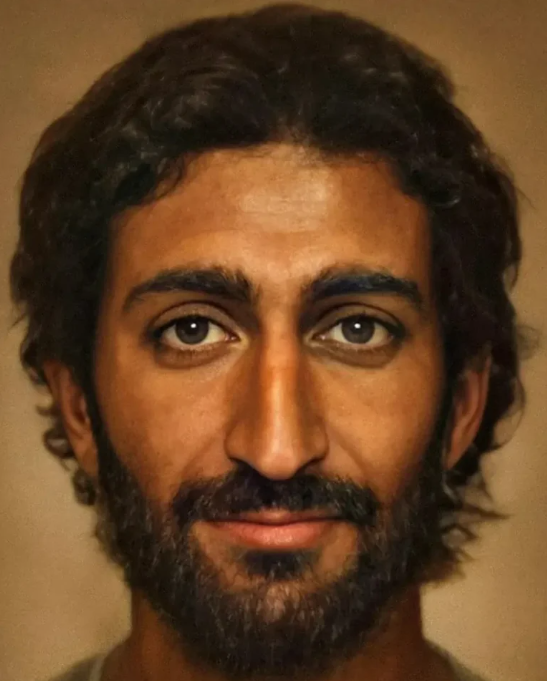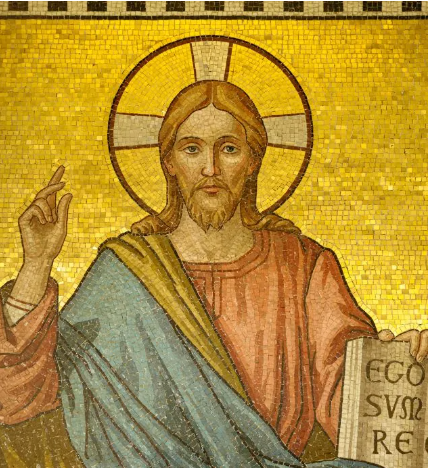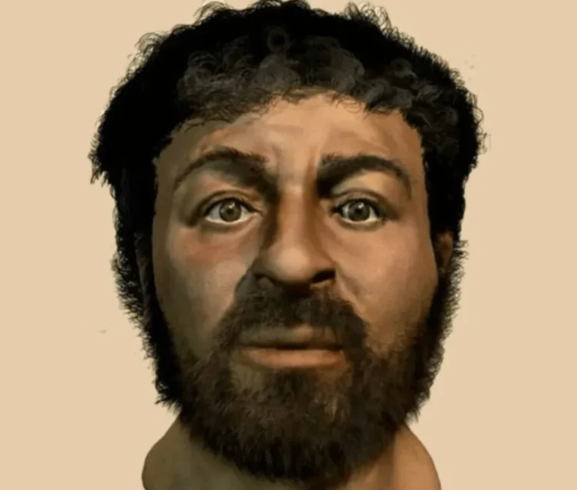For for two thousand years, theological scholars and historians have argued over what the appearance of the historical Jesus Christ might have been.
The Son of God is frequently pictured as a tall, muscular European with long, blond hair and piercing blue eyes in Renaissance art and by the Catholic Church.
Nevertheless, the majority of historians concur that a carpenter’s son born in modern-day Palestine would share the same physical traits as the locals of that time: a shorter, stockier build, and curly black hair.
Bas Uterwijk, a Dutch photographer and digital artist, embarked on a journey to create an image of Jesus that closely aligns with the historical context of his birthplace. He used cutting-edge technology and machine-learning techniques from Artbreeder to recreate the likeness of the Messiah.

Unsurprisingly, the resulting image challenges our common perception of Jesus’ appearance.
Bas explains, “The AI software harnesses the power of a neural network trained on many photographic portraits and painted renditions of human faces.” This technology allows users to blend various facial references to create a synthesized image that considers their aesthetic preferences. Bas utilized this capability to breathe life into both real and fictional personalities.
“I aimed to refine the ethnicity, crafting a Middle-Eastern visage that resonates with authenticity, drawing from a tapestry of artistic depictions of Jesus of Nazareth rooted in Byzantine and Renaissance traditions, including Leonardo da Vinci’s ‘Salvator Mundi’ and the enigmatic Turin Shroud,” says Bas.
While Bas was satisfied with the outcome as a representation of the collective cultural depiction, he aimed for greater historical accuracy. He painstakingly adjusted the length and style of the hair and beard to align with the norms of that era and region. He also incorporated elements from Fayum mummy portraits, pushing Renaissance aesthetics to the margins.

It’s important to note that Bas’s efforts result in an aesthetic impression of what Jesus might have looked like rather than a rigorous pursuit of scientific exactitude.
Historical documents suggest that the people of Judea and Egypt had olive-toned complexions, ebony-black hair, and brown eyes. This aligns with the likely appearance of Jesus, who was born into a Jewish family in Bethlehem in 4 BC and grew up in Nazareth, Israel.

Joan Taylor, author of “What Did Jesus Look Like,” emphasizes that Jesus lived an itinerant life with no permanent residence. He relied on the generosity of others and shared in the struggles of the less fortunate.
Historical records, including those of the 2nd-century scholar Celsus, support the depiction of Jesus as a humble figure with a scruffy, unkempt appearance, akin to a wanderer or beggar.
While the iconic features associated with Jesus, such as flowing hair, robes, and a beard, date back to the 4th or 5th centuries, the historical Jesus likely looked quite different.
As this project sheds light on the historical nuances of Jesus’ appearance, it encourages discussions about the iconic figure we cherish. Please SHARE this post with your friends and family on Facebook to generate meaningful debates on this topic.







